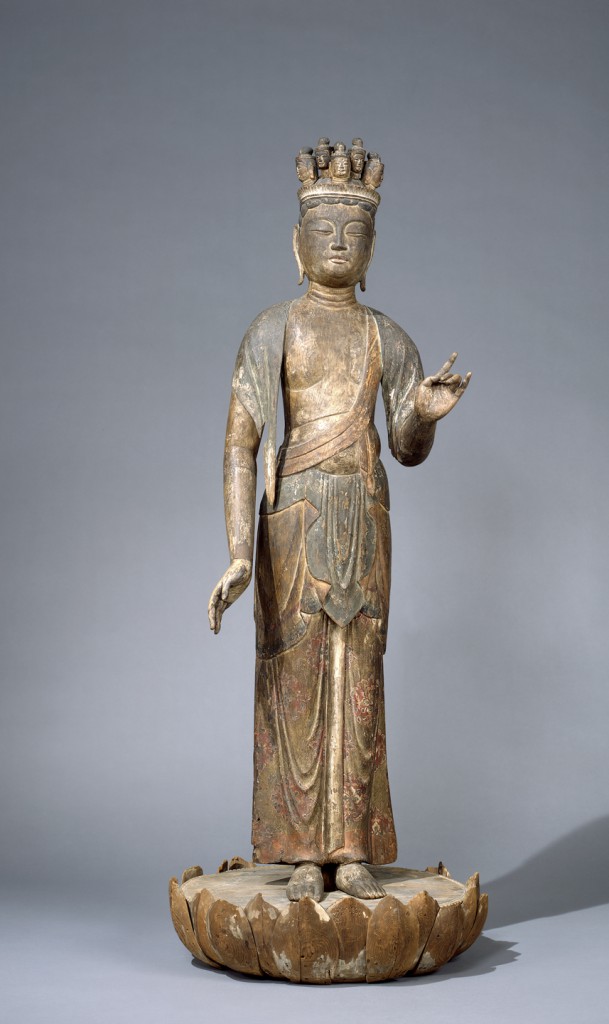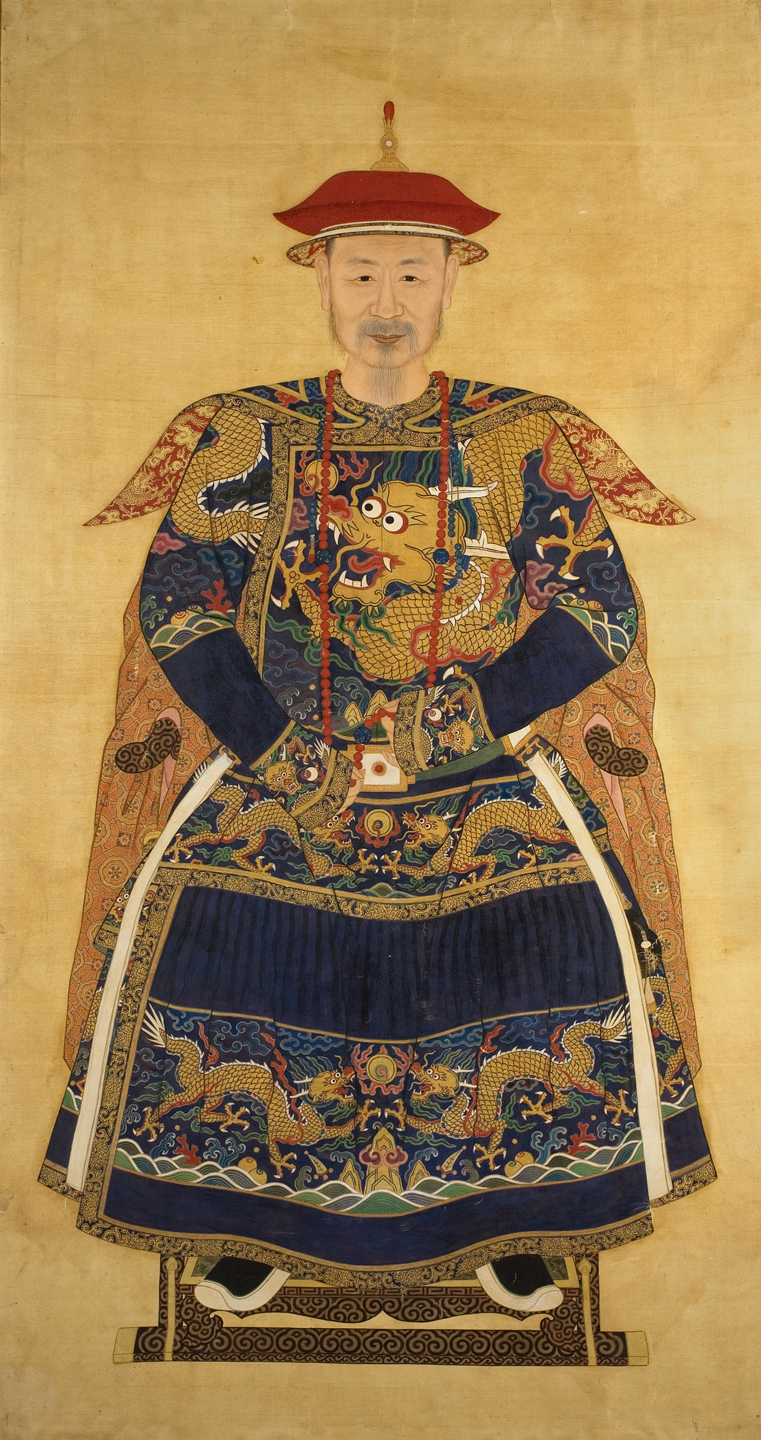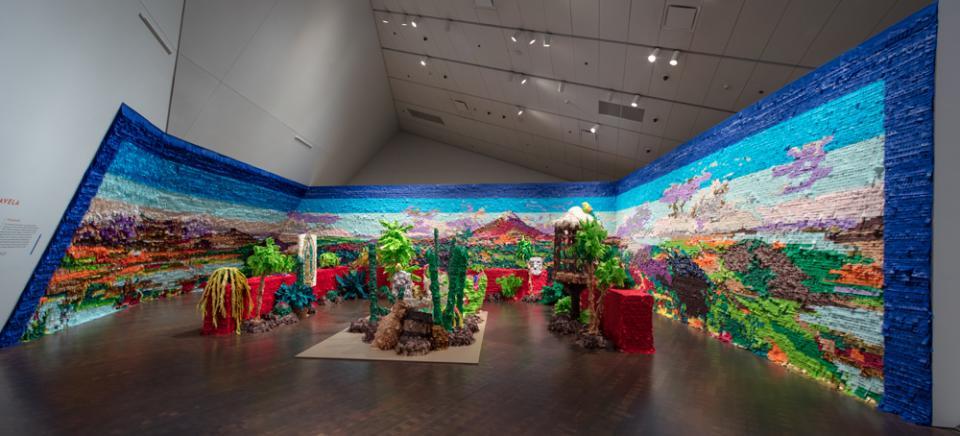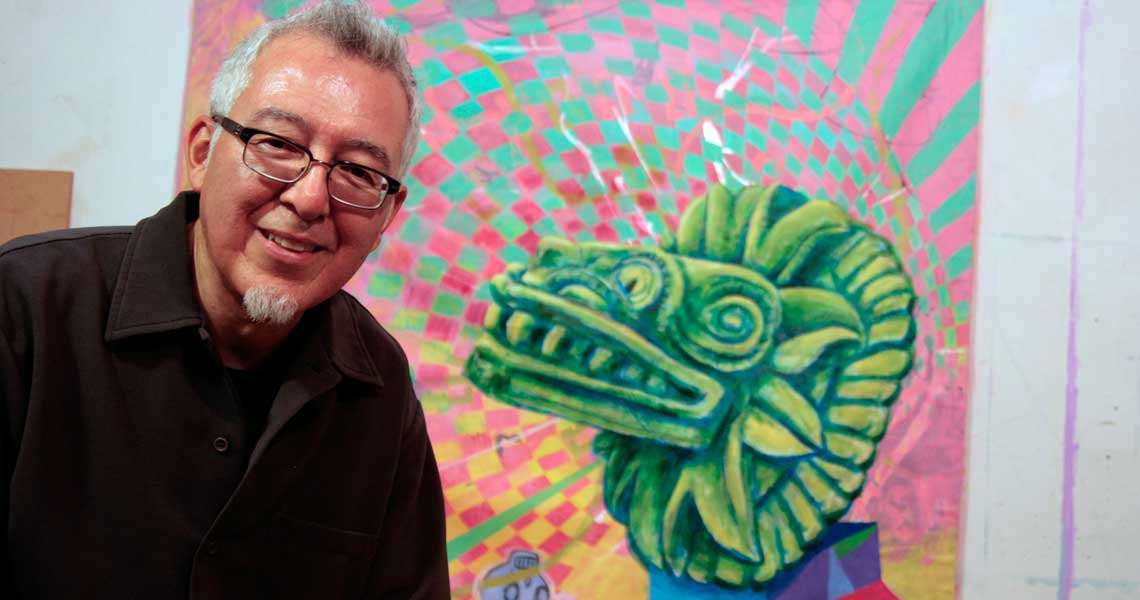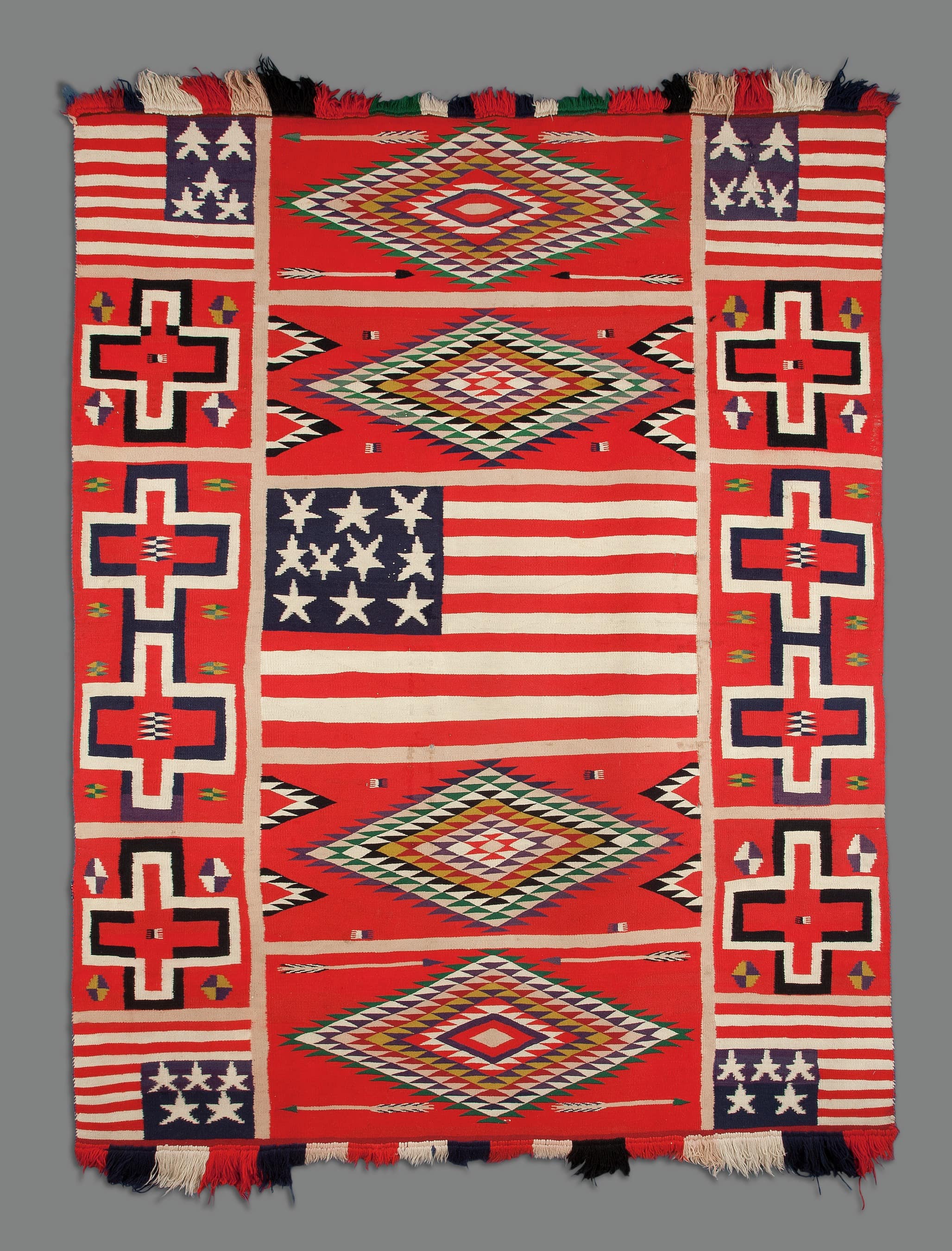This lesson focuses on the story of the Eleven-Headed Bodhisattva of Compassion and the definition of “compassion.” Students will work with visual images and tools to enhance oral and listening skills, while building upon kindness in peer relationships and with others around them.
Students will be able to:
- use listening and oral skills;
- make connections to the world around them; and
- work with classmates to complete a visual diagram about the Bodhisattva.
Lesson
- Warm-up: Begin with students sitting in a circle. Explain that students are to think of a time when another person was kind to them. Provide a stuffed animal or doll to pass around the circle. When they receive the object from the person next to them it is their turn to share. They may tell the animal/doll their story or tell the entire class. (If you have a large class and another adult to help, split them into two groups. If possible, one group can go outside or into the hall for the warm-up portion of the lesson). Once children have each had a turn, talk about how thinking about other people, animals, nature, and the world shows compassion.
- Bring the groups back together. As you pass out or display the image of the Eleven-Headed Bodhisattva of Compassion, provide a short description of the Buddhist belief about Bodhisattvas. Tell the story of the Eleven-Headed Bodhisattva of Compassion and explain why he has so many heads. Explain that his selfless thoughts show his compassion. (Refer to About the Art for more information). Touch upon examples of how each child in the class can be compassionate by listening to their peers, sharing, or giving someone a compliment.
- Next, focus on pronouncing and repeating the word compassion. Say it many times and have the class say it with you.
- Place the papers with pictures of each child on display near the image of the Bodhisattva. Give suggestions of how the children can be compassionate. For example, say: “When you go outside today maybe you will picture yourself as the Bodhisattva and you can remember to be kind or share.”
- Explain that you would like to see their thoughtfulness for the rest of the day or week. This will be the class’s “kindness” reminder. For several days ask the students if they can recall an act of kindness they or some other child in class have done. Write a note about that act on the individual child’s piece of paper. Add your own observations. Do this for the whole year if you wish.
Materials
- A small object to be passed in a circle (like a stuffed doll or animal)
- An enlarged image of the Eleven-Headed Bodhisattva of Compassion
- White board and pens
- Photos of the students’ faces, about 2-3 inches in size on an 11½ inch by 8 inch piece of paper
- About the Art section on the Eleven-Headed Bodhisattva of Compassion
- Color copies of the Eleven-Headed Bodhisattva of Compassion for every four students, or the ability to project the image onto a wall or screen
Standards
- Visual Arts
- Observe and Learn to Comprehend
- Relate and Connect to Transfer
- Language Arts
- Oral Expression and Listening
- Research and Reasoning
- Writing and Composition
- Reading for All Purposes
- Collaboration
- Critical Thinking & Reasoning
- Information Literacy
- Invention

Eleven-Headed Bodhisattva of Compassion
Artist not known, Japan
1100s, late Heian period
Height: 50 in. (including base)
Collector's Choice IV Benefit Fund, 1982.134
Photograph © Denver Art Museum 2009. All Rights Reserved.
This sculpture was most likely made by multiple artisans who were called busshi [BOO-shee] (Japanese sculptors of Buddhist images). It was made during Japan’s Heian period (794-1185 CE), an era characterized by a great flowering of literature, art, and religious thinking. During the Heian period, sculptures were made almost exclusively of wood. This sculpture was made in the yosegi [yoh-SEH-gee] fashion, a technique that involved carving several separate pieces of wood and assembling them to form the sculpture. After the pieces were assembled, the detailed carving would be finished. Often, each piece of wood was carved by a different artisan-specialist. This kind of assembly line production turned out more large-scale images than a single artisan could, and in a shorter amount of time. This sculpture was also painted with brilliant colors, but the paint has worn off over time, leaving the wood exposed in certain areas.
The word bodhisattva [boh-dee-SAHT-vah] means "one whose essence is enlightenment.” A bodhisattva is an important figure in the Buddhist religion. In Buddhism, all living beings take part in an ongoing cycle of birth, death, and rebirth, known as the Wheel of Life. All deeds, good or bad, are carried from past lives into future lives. This cycle continues until sufficient knowledge and spiritual experience leads to enlightenment, or nirvana [neer-VAH-nah]. A bodhisattva is a being who has achieved nirvana but, instead of passing out of the Wheel of Life, chooses to remain in the world to help others. Bodhisattvas exercise compassion by sharing the wisdom they have gained during their many past lives.
This sculpture is a representation of the Bodhisattva of Compassion (called Kannon [KAH-known] in Japanese), who was one of the most popular bodhisattvas in Heian Japan. The name Kannon means “the one who hears their cries.” Believers appeal to Kannon for help in achieving enlightenment and protection from disaster. This sculpture was an object of devotion, probably placed in a Buddhist temple complex where devotees could make offerings to the bodhisattva.
Details

Eleven Heads
There are thirty-two different forms of Kannon; this sculpture depicts the form called the Eleven-Headed Kannon. Only five of the eleven small heads remain on the top of the sculpture. The eleven heads are said to originate out of the despair that the bodhisattva felt at seeing countless individuals who had not found salvation. This grief caused his head to split into ten fragments which then formed into additional heads. The additional heads symbolize his awareness of the needs of all conscious beings—humans, animals, and insects.
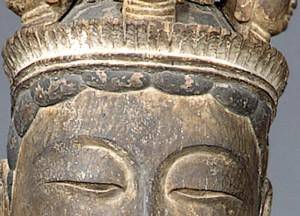
Crowns
Jeweled crowns are typical of bodhisattvas and suggest royal stature.
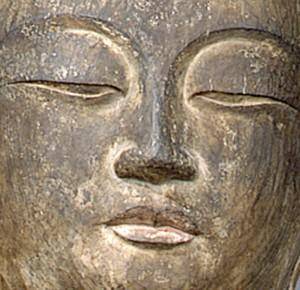
Caring Expression
The bodhisattva’s expression is meant to express gentleness or kindness. The eyes are almost closed and may convey a sense of calm.
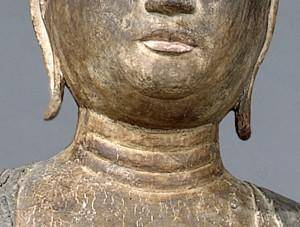
Aristocratic Body and Clothing
The proportions of this sculpture mirror the fashions of the upper class during the Heian Period. The padded hips, slightly bulging belly, full arms, rings of flesh on the neck, and long, pierced earlobes are all signs of wealth and nobility. Being thin as a sign of beauty is very much a creation of the modern world. In the past, in most cultures, beauty was associated with having plenty to eat and being a bit on the fleshy side.

Lotus Throne
The lotus plant symbolizes purity emerging from an imperfect world. Lotus flowers grow from the mud at the bottom of a pond and eventually bloom on top of clear water.
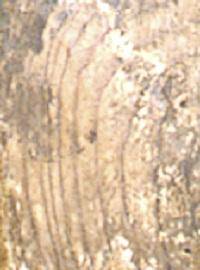
Wood Grain
Although the wood grain would not have been visible originally (it would have been hidden under brightly colored paint), its lines follow the forms of the face and body with precision.

Hand Gestures
These hand positions are called mudra [MOO-drah] and are a kind of hand-sign language. One hand is held down with palm open and the fingers gently cupped. The other hand is raised with thumb and middle finger together. These two hand gestures together might have suggested appeasement, or bringing peace and calmness to the world. However, it is possible the hands were replaced over the years, as hands are fragile and tend to break off of sculptures.
Funding for object education resources provided by a grant from the Morgridge Family Foundation. Additional funding provided by the William Randolph Hearst Endowment for Education Programs, and Xcel Energy Foundation. We thank our colleagues at the University of Denver Morgridge College of Education.
The images on this page are intended for classroom use only and may not be reproduced for other reasons without the permission of the Denver Art Museum. This object may not currently be on display at the museum.
